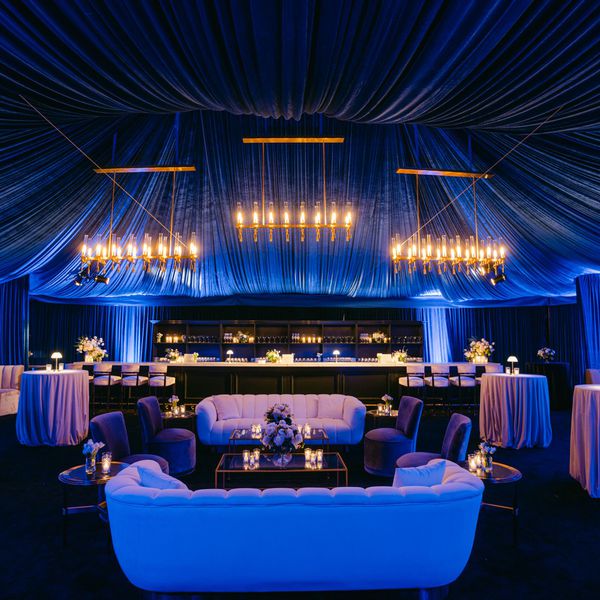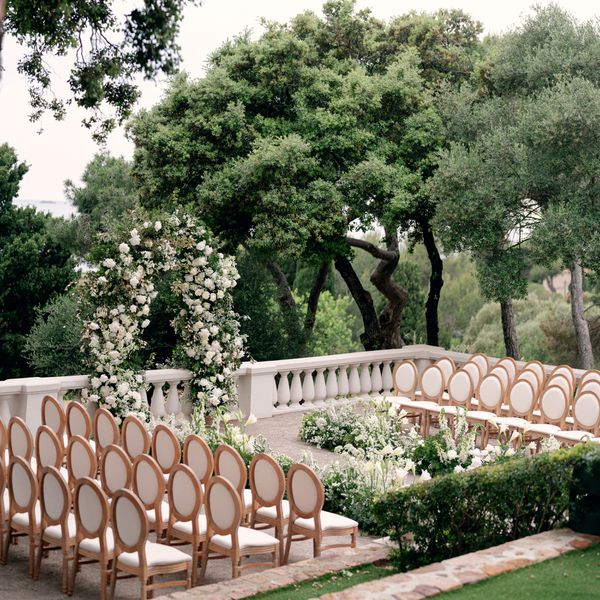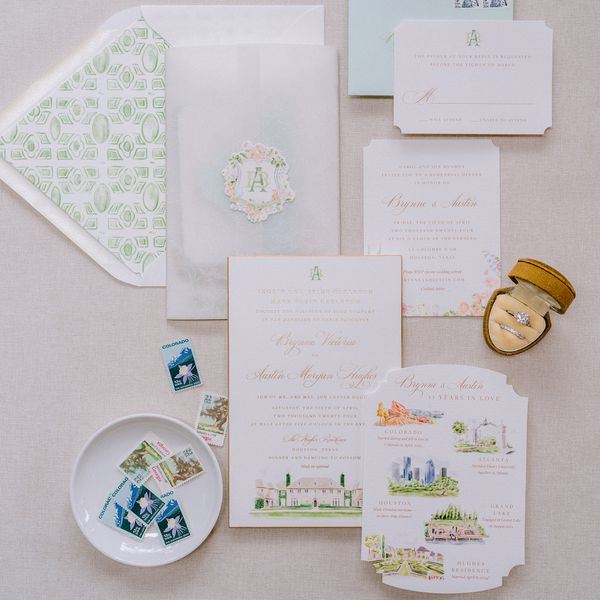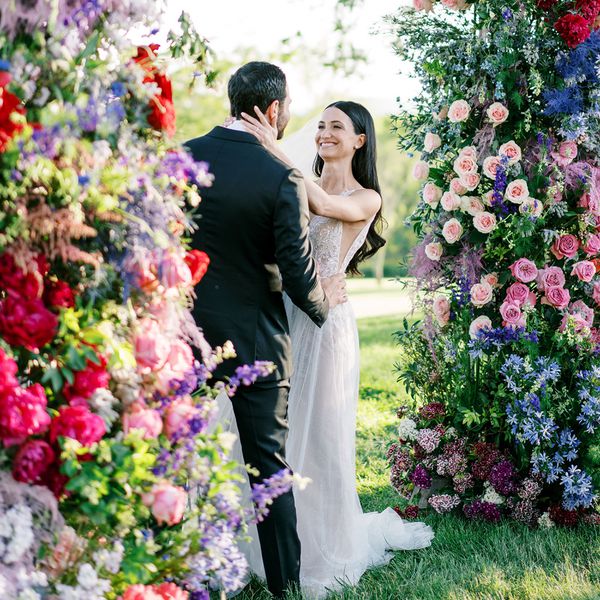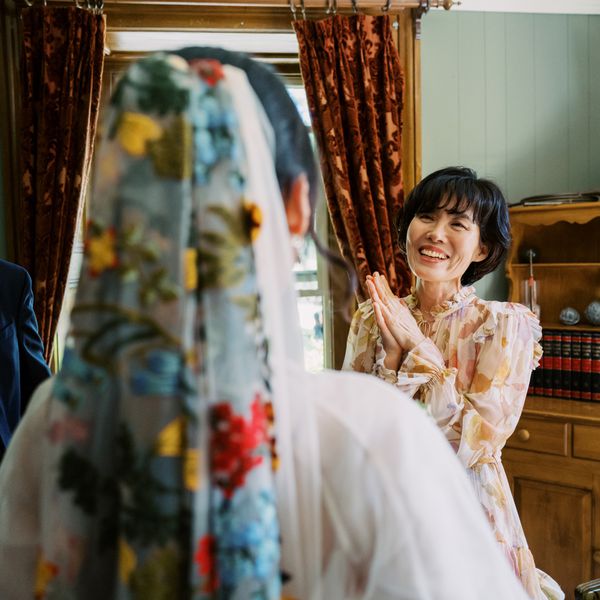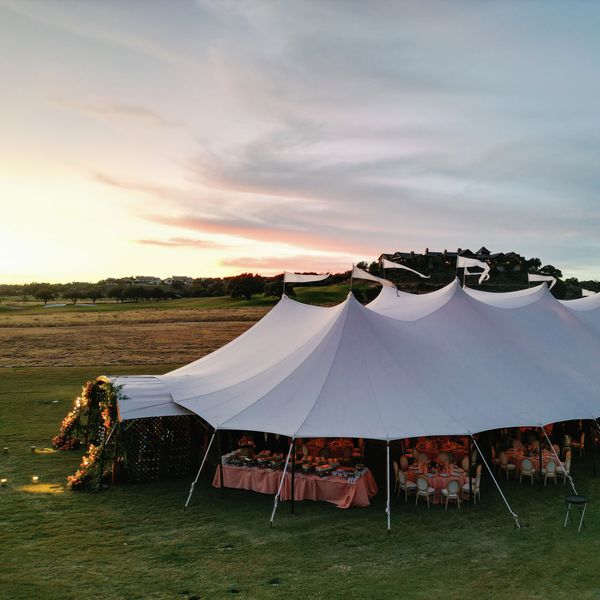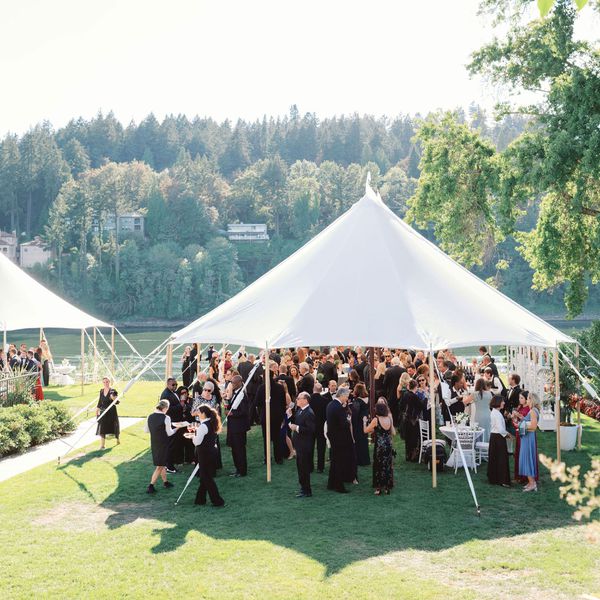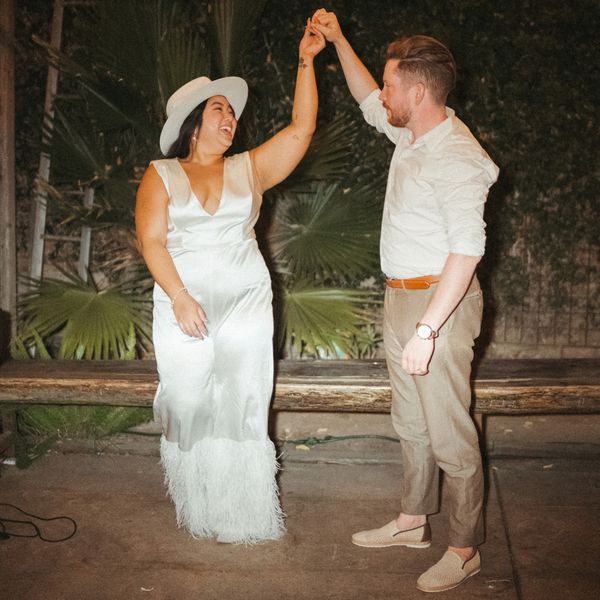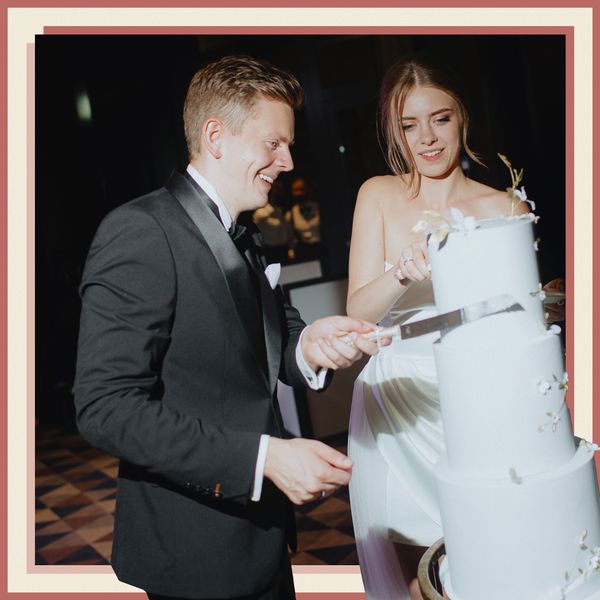:max_bytes(150000):strip_icc()/Main-Wedding-Cremony-Reception-Same-Location-Imogen-Xiana-55dabb1eeb6b46d7af855bab1086440e.jpg)
Photo by Imogen Xiana
There are many reasons why you might be compelled to host your wedding ceremony and reception in the same space. Maybe your choice is driven by logistical motives, like minimizing travel for out-of-town guests or wanting to keep your day-of timeline short and sweet. Your decision might also be fueled by budget constraints, as hosting a ceremony and reception in one room can help you and your partner save a significant amount of money. It can even be caused by unavoidable factors, like day-of weather that drives an outdoor ceremony indoors or a dream location that only has one room big enough to fit all guests.
“Your guests are only transporting themselves to one place—this is especially helpful for out-of-town guests who may not have a rented car and are not familiar with the location,” event planner Carina Van Son further explains. “Additionally, your vendors are only focused on one place, which means they don’t have to split their teams to simultaneously set up in two locations. For cities that can have traffic issues and weekend events—games, concerts, festivals—this is a huge bonus.” Whatever your reasons, using the same room for both parts of a wedding is entirely workable—especially if you’re intentional about the design, décor, and flow of your big day.
Meet the Expert
Carina Van Son is a lead wedding planner and designer at Sinclair & Moore, a Seattle-based event planning company.
Here, Van Son explains how to effectively host your ceremony and reception in the same room or space. Read on for all her expert tips, including what to know when planning out your décor and day-of timeline, among other elements.
Key Takeaways
- While hosting your ceremony and reception in the same space is feasible, the design and décor aesthetic for both events will likely be similar, as a complete venue transformation can be difficult and costly.
- Timing is paramount when hosting your entire wedding in the same space—60 to 90 minutes is the recommended time allotment—so you'll need to work with a team of professionals to ensure the transition from ceremony to reception goes smoothly.
- If you're hoping to plan a ceremony and reception with two unique aesthetics, you should avoid having both in the same room or event space.
What to Know When Hosting a Wedding Ceremony and Reception in the Same Space
From conceptualizing a design aesthetic to hiring the right staff, here's everything you need to know if planning to host your wedding ceremony and reception in the same room or outdoor space.
:max_bytes(150000):strip_icc()/BBG_095-d7911372e7914fb2bad5aca302bcab75.jpg)
PHOTO BY BO SHIM
The Design and Décor
While you can adjust some elements of the space between your ceremony and reception, most couples don’t have time to create an entirely new design scheme. Meaning, if you do choose to go this route, you should be okay with your ceremony and reception having a similar vibe. “On the design side, when reusing the room, your foundational elements will be the same," Van Son explains. "If you are someone who would like to have a different aesthetic for the reception, flipping the room might not be the best choice."
You should also be aware that larger décor pieces used for your ceremony—like a floral arch or a ceiling installation—usually can’t be moved between events, though smaller aisle florals or signage can be repositioned to define and accent new parts of the room. “When using the same location for both your ceremony and reception, it’s often most cohesive if you view your reception design as a continuation of your ceremony,” notes the event planner. “It’s absolutely possible to add in a new color or two, or give the space a new look with dinner table linens, different chairs, and candles, but a full transformation can be challenging, and often costly."
The Ceremony Setup
Van Son suggests designing a ceremony layout in which the most impactful elements can make a similarly powerful statement at your reception. “We love to use the focal point of the ceremony—the floral arch or ground floral arrangements—as the anchor point for the head table or sweetheart table,” she says. “Floral arrangements that might have been used to line the aisle work really well in front of a band stage, the reception bars, DJ table, and photo booths.”
However, don’t expect your centerpieces to be the center of attention at both events, Van Son shares; these should be reserved for the reception tables only. “It can be tempting to use them somehow in the ceremony, but since these are flowers whose details will be close to your guests while they are dining, you want them to be fresh, new, and looking their best,” the planner adds.
:max_bytes(150000):strip_icc()/michelleandmatt---58-68df90a385f940e9bcce5044d0098eb8.jpg)
PHOTO BY ABBY JIU PHOTOGRAPHY
The Reception Setup
While your team could spend the morning setting up your ceremony, they’ll have much less time to flip it for the reception—which can affect how elaborate your tablescapes, place settings, and overall design can be. “Planning for your reception design in a room flip might depend largely on the venue and setting itself; some venues have space to preset all the reception tables and hide them away in a separate space, like a hallway or nearby ballroom,” says Van Son. “If this is the case, the sky's the limit for your tabletop design. Since these can be set ahead of time, there is no need to limit the intricacy of your centerpieces, place settings, candles, or details.”
If your venue doesn’t have space for pre-set tables, however, then you’ll need to design a less labor-intensive tabletop with fewer pieces that can be arranged more quickly. Meaning, you should always check in with your venue to see what's feasible before conceiving a reception design.
The Day-of Timing
Most event flips can only happen within a 60 to 90-minute time frame—the segment of the day allotted for the cocktail hour. “It’s hard to push cocktail time for a longer period than 90 minutes; guests become hungry for substantial food and are ready to sit for dinner,” says Van Son. This means your team will need to work quickly—and, ideally, away from guests who are nosing around for a sneak peek.
“You will want the ability to close off the transitional space completely from your guests, as this allows for the vendors to work swiftly and safely, without compromising their pace to accommodate guests who might have a curious eye,” explains Van Son. “This allows for your guests to only see the beautiful, finished product, instead of the chaos it might have taken to create it.”
The Staffing Requirements
One of the key considerations in whether your space can be flipped is how much staff you have: Van Son recommends double-checking with your planners and venue to make sure all—or enough—hands are on deck. Scheduling a first look before the wedding also frees up your vendors to focus on the room flip while you focus on your new spouse. “The less you are scheduling during the room flip time, the better,” says Van Son. “This allows for your florist and planning team to focus their attention completely on the room change—and bonus: You will get to enjoy most of your cocktail hour because you won’t need to be taking pictures the whole time.”
